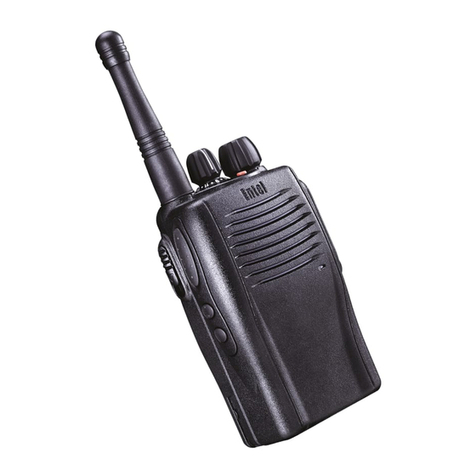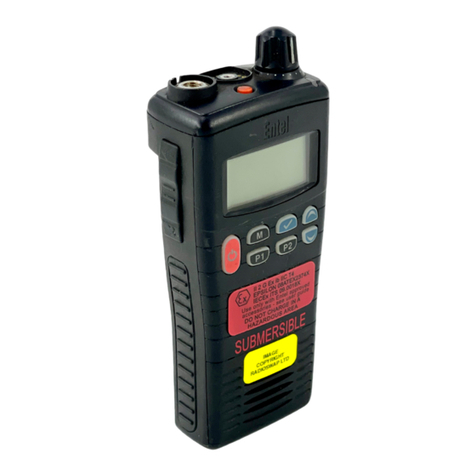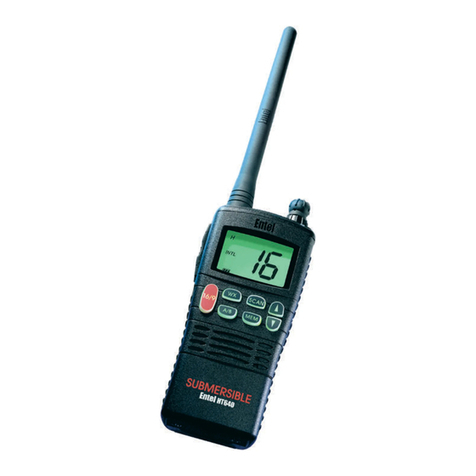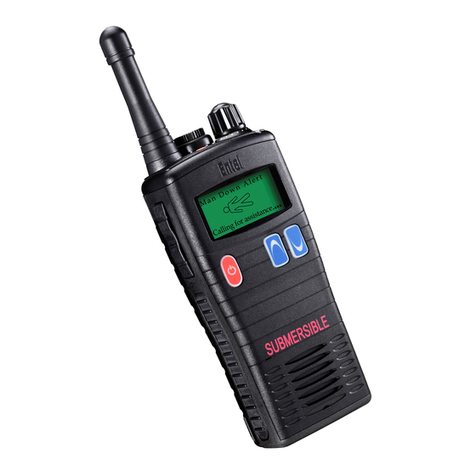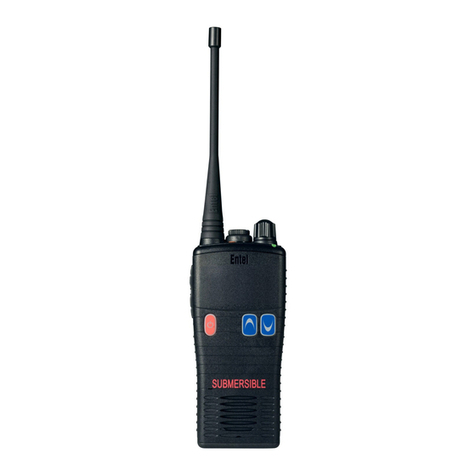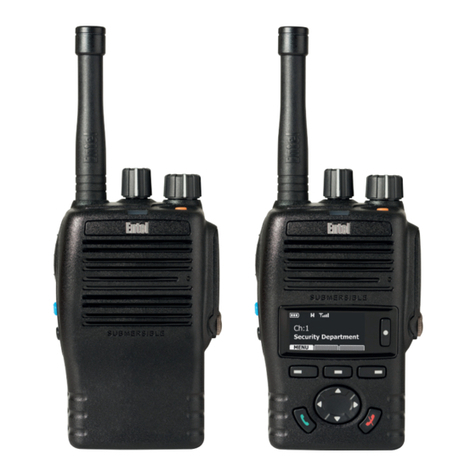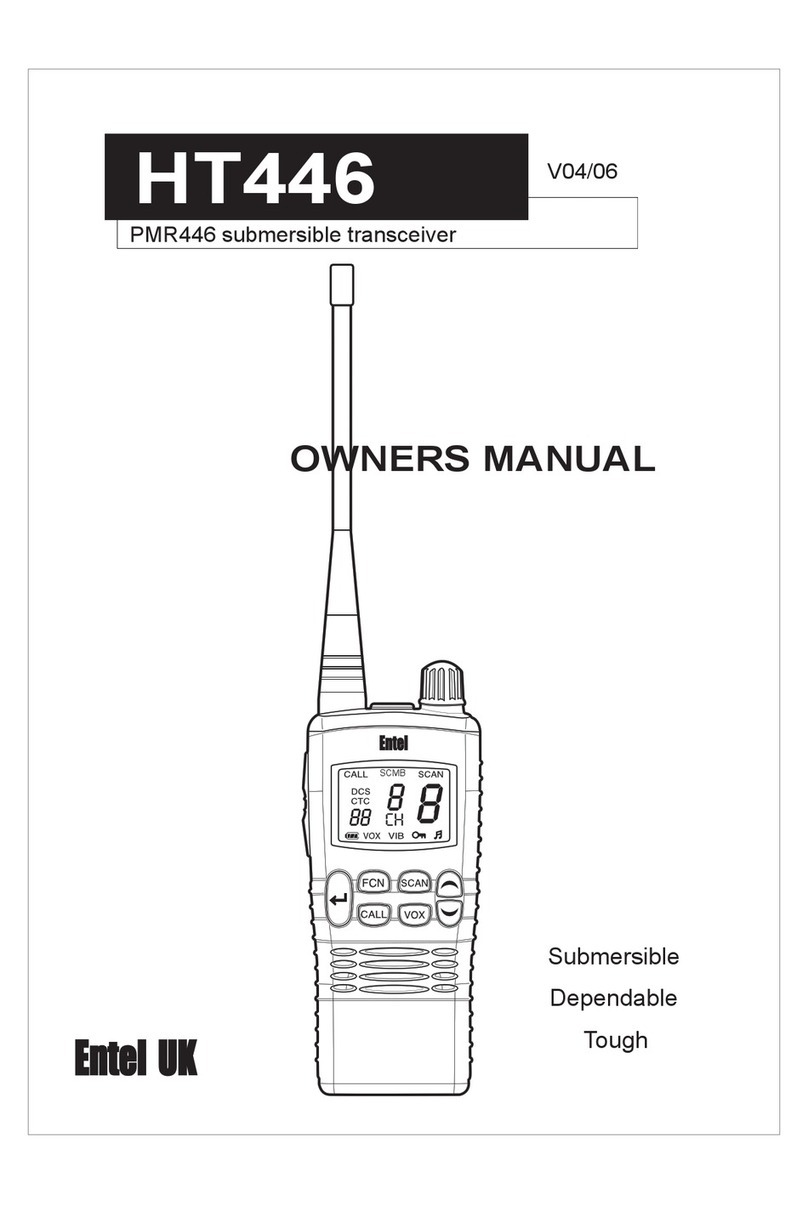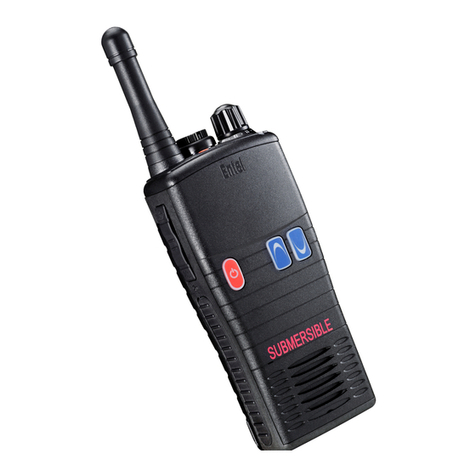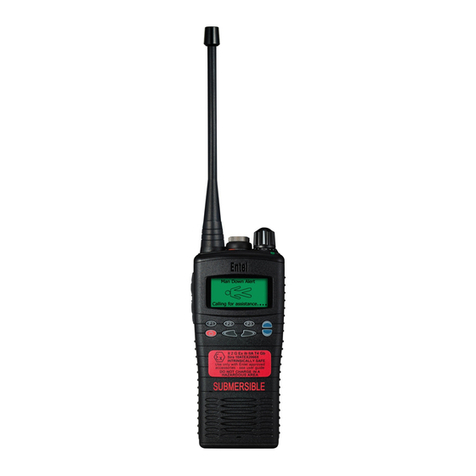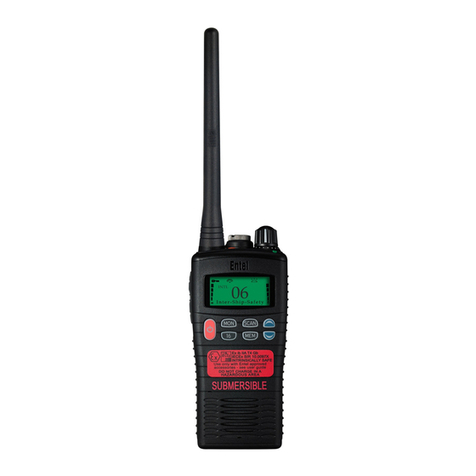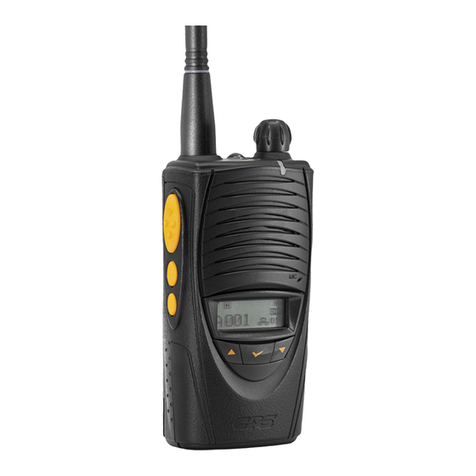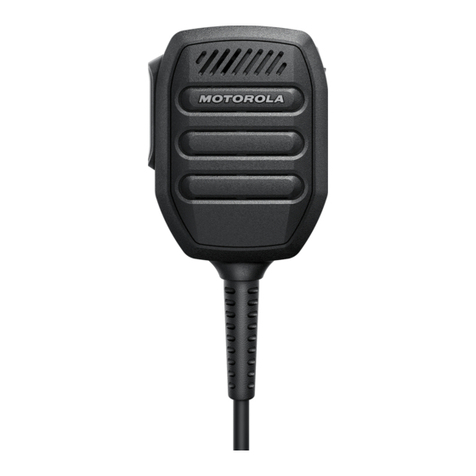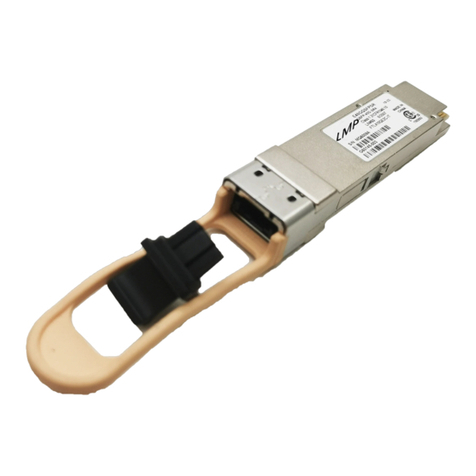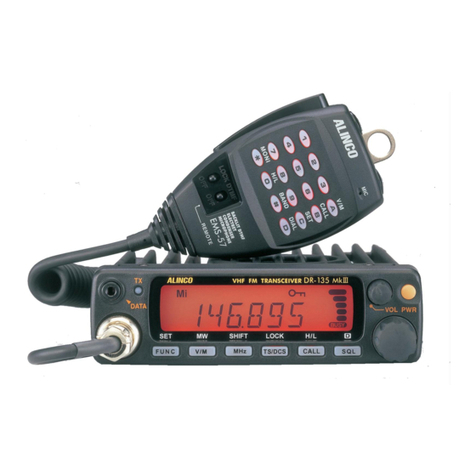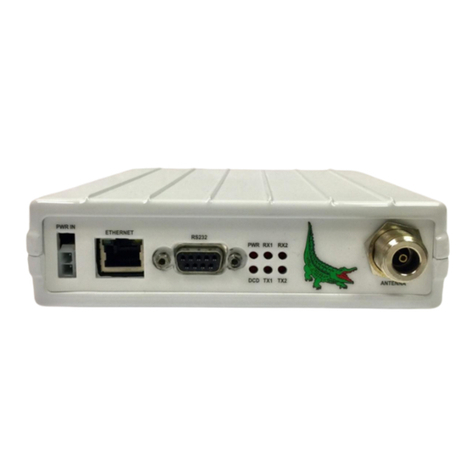Entel HT446 User manual

T446E
Entry
User Guide – T446 Series v11/08
Common Information
(all models)
T446L
LCD
Professional submersible PMR446 handheld transceivers

Common
Introduction
This guide covers the ‘basics’ of your radio’s operation.To meet your exact
requirements the radio may have been customised by your Entel authorised dealer.
These features will be explained in a separate guide issued by the dealer.
1
Table of Contents
Common Information Page
Certification 2
Radio Care 3
Battery Care 4
Packing List 5
Optional Accessories 5
Preparing Your Radio For Use 6 & 7
Using Your Radio 8 & 9
HT446E
Feature List 10
Controls & Indicators 11
ProgrammingYour Radio 12 & 13
Cloning Your Radio 14
Frequency & Tone Table 15 & 16
HT446L
Feature List 18
Controls & Indicators 19
LCD Indicators 20
Programming Your Radio 21
Cloning Your Radio 22
Default Channel Configuration 23
Troubleshooting Guide 24

2
Common
Certification
Declaration of Conformity
The T446 series transceiver displays "CE" on the serial number label, indicating its
compliance with the essential requirements of the EEC directive for Electromagnetic
Compatibility.
CE Compliance Statement
We Entel UK Limited
OF:
4 Elstree Gate,
Elstree Way
Borehamwood
ertfordshire
WD6 1JD
United Kingdom
Declare under our sole responsibility that the product:-
T446 series PMR446 U F handheld transceiver
Serial Number________________________________
To which this declaration relates, is in accordance with directive 99/5/EC
and conforms to the following standard or other nominative documents:-
EN 300 296 (March 2001), EN 301 489-1 V1.5.1:2003, EN 60065:2002
Following provisions of the R&TTE directive.
M Austin
Quality Manager

3
Common
Radio Care
Advice
•Do not use options or accessories not
specified by Entel
•Ensure that the radio is used within the
parameters for which it was designed
•Please switch the transceiver off before
connecting optional accessories.
Warning
Turn the transceiver off in the following locations:
•In explosive atmospheres (flammable gas, dust
including metallic & grain powders etc)
•Whilst taking on fuel or while parked near
fuel station
•Near explosives or blasting sites
•In aircraft, medical institutions or near
persons known to be wearing a pacemaker
Caution
•Do not disassemble or modify the transceiver
for any reason
•Do not transmit while touching the antenna
terminal or any exposed metallic parts of the
aerial as this may result in a burn
•Please check and observe regulations in your
country with regards to use whilst driving
End of Life Disposal
•When your Entel transceiver reaches the end
of its useful life, please ensure that the unit is
disposed of in an environmentally friendly way.
For country specific information please see
www.entel.co.uk/recycling
Introduction
Your Entel radio is supplied with a high
performance Lithium Ion (Li-Ion) battery.
These batteries:
•Extend talk time
•Reduce the battery’s size and weight
•Do not suffer from ‘memory effect’ that
reduces the life of Ni-Cad and NiM
batteries
•ave a low toxicity, therefore reducing the
impact on the environment
Battery Pack Precautions
•Switch the transceiver OFF before charging
•Charge the battery pack before use
•Do not recharge the battery pack if it is
Battery care
already fully charged. This could lead to a
premature battery replacement warning
message. (See Battery Communications on
page 4)
•Charge the battery in accordance with the
instructions enclosed with your charger
•Do not charge the transceiver and/or
battery pack if they are wet
The battery pack includes potentially
hazardous components. Please:
•Do not disassemble or reconstruct battery
•Do not short-circuit the battery
•Do not incinerate or apply heat to the battery
•Do not immerse the battery unless attached
securely to the radio in water or get it wet by
other means

4
Common
Battery Care / Information
Battery Communications
Each battery used with your radio has a
microprocessor fitted, which logs the number of
times your battery has been charged.
On a radio with an LCD display, the number of
times the battery has been charged, together with
the remaining charge cycles available, will be
shown during switch on.
The warranty on all batteries is 12 months from
new, or 450 charge cycles - whichever is the
sooner. After 420 cycles, at switch on the radio
will emit a series of short tones, and on LCD
models a waste bin icon will flash to alert you to
the need to buy a new battery.
Note: only genuine Entel batteries should be used.
Only genuine batteries offer the battery charge
count feature informing you when the battery is
reaching the end of its useful life. Customer
satisfaction is assured as you can not be supplied
with sub standard, potentially dangerous battery
packs from 3rd party manufacturers.This ensures
it delivers the expected capacity and endurance.
On T series batteries a breathable membrane is
used.This is clearly marked on the battery label.
Piercing the membrane will allow water ingress to
the battery, and will invalidate the warranty.
After 450 cycles, at switch on the radio will emit a
series of long beeps. On LCD models the
message will change to BATTERY COUNT
EXCEEDED REPLACE BATTERY. The radio will
continue to operate but its operational time
may be reduced, eventually failing all together.
•Do not charge the battery near fires or under
direct sunlight
•Use only the specified charger and observe
charging requirements
•Do not pierce the battery with any object or
strike it with an instrument
•Do not use the battery pack if it is damaged
in any way
•Do not reverse-charge or reverse-connect
the battery
•Do not touch a ruptured or leaking battery
If liquids from the battery get into your
eyes, immediately:
Wash your eyes out with fresh water. Avoid
rubbing them. Seek medical treatment
Battery Pack
•If a battery is not to be used for an extended
period of time (e.g. several months) remove
the battery pack from the equipment and
store in a cool and dry location (around 0°C)
part charged. Do not fully discharge the
battery before storage.
•Each charge cycle reduces the battery’s life.
Minimise the number of times you charge
your battery especially in hotter
environments.

Common
Packing List
•T446 Radio
•CNB750E Rechargeable 1800mAh Li-Ion battery
•CB 750 Spring loaded belt clip
•CSA T Intelligent rapid charger
•User guide CD
Optional Accessories
5
Battery & Charger Options
CNB750E Spare 1800mAh Lithium-Ion battery pack with rear clip
CSA T 1-way intelligent rapid charger, 110-230v
CSB T 6-way intelligent, rapid charger, 110-230v
CCA T-230 1-way trickle charger with 230V mains adapter
CCA T-110 1-way trickle charger with 110V mains adapter
CCA T-12 1-way trickle charger with cigar lighter lead, 12V DC operation
CBE750 Dummy battery and regulator with cigar lighter plug
Carry Options
CFC750 T 2.0 series soft leatherette case finished in black with carry strap
CLC752 T446E heavy duty black leather case with strap & belt loop
CLC753 T446L heavy duty black leather case with strap & belt loop
CB 750 Spare spring loaded belt clip
Audio Accessory Options
CMP1/750 Compact medium duty speaker microphone with earpiece jack
CMP750 eavy duty submersible speaker microphone
E P9 D-shaped earpiece (plugs into CMP1/750 or CMP750 above)
Tattoo Lightweight Bluetooth earpiece/microphone
X3 Durable, water resistant Bluetooth earpiece/microphone
M10 Ultra small Bluetooth earpice/microphone
BTPTT Small Bluetooth remote press to talk button
EA12/750 D-shaped earpiece with in-line PTT/microphone & VOX*
EA15/750 Earpiece microphone with transparent acoustic tube & VOX*
EA19/750 D-shaped earpiece with boom microphone and in-line PTT & VOX*
E P750 D-Shaped earpiece (connects directly to radio)
EPT40/750 Bone conductive earpiece microphone with PTT
CXR5/750 Bone conductive skull microphone with in-line PTT
CXR16/750 D-shaped earpiece and throat microphone with in-line PTT

Common
Attaching / Removing The Battery Pack
1To attach, locate the pegs on the bottom of
the battery and place into the slots on the
radio.Then press the top of the battery against
the radio. Secure battery by tightening the
screw clockwise by hand. (do not over tighten)
2To remove, unscrew the locking screw
anticlockwise and pull the battery away from
the top of the radio.
Attaching / Removing The Belt Clip
1To attach, press the clip into the slot on
the back of the battery and slide up until
you hear a “click”.
2To remove, pull the tab (a) towards the
belt clip.Then slide the belt clip
downwards (b).
Optional Accessories cont...
12
12
a
b
6
Preparing Your Radio For Use
For complete up to date list of optional accessories visit www.entel.co.uk
C P1/750 Light weight single earpiece headset with in-line PTT & VOX*
C P750 S Single earpiece ear defender headset with boom mic and in line PTT for hard hat & VOX*
C P750 D Double earpiece defender headset with boom mic and in line PTT for hard hat &VOX*
C P750D Double earpiece headband defender headset with boom mic and in line PTT & VOX*
C P750BT Bluetooth double earpiece headband defender headset with boom mic and ear cup PTT
* VOX = Voice Operated Transmit (hands free operation)

7
Common
Preparing Your Radio For Use cont...
Attaching / Removing Audio Accessories
1To attach, remove the accessory cover by unscrewing the
locking screw anti-clockwise (leave cover attached or store in a
safe place). Attach accessory plug by locating over the socket.
Carefully tighten the locking screw clockwise until finger tight
(do not tighten with a screwdriver etc).
2To remove, unscrew the locking screw by hand in an anti-
clockwise direction (carefully use a coin or screwdriver if too
tight). Ensure you re-fit the accessory cover so as to protect
the socket.
Charging Your Radio
Several charger options are available. Please refer to your
charger user guide.

Common
8
Using Your Radio
Button Key Beeps
The radio will emit a short confirmation beep when pressing any of the function buttons.This
confidence tone confirms the button has been correctly pressed (key beeps may be disabled by
your dealer).
Channel Monitor Button (Dealer Programmable Function)
Tone/squelch defeat disables both CTCSS and DCS tones used and opens the squelch on the radio.
This will allow you to monitor any transmissions taking place that are not on the same
CTCSS/DCS tone on the channel you have selected and listen to any weak signals that may be
breaking up. When activated, you will hear either a rushing noise or any other channel users.
TurningYour Radio On
Turn your radio on using the on / off volume control on the top of the radio. The radio will
“beep” and the LED will briefly illuminate yellow. (The beep may be disabled, if required, by your
Entel approved dealer).
Making a Call
Before transmitting on your radio, first ensure that the channel is not in use (yellow or green busy
LED will be illuminated and audio may be heard from speaker).To transmit press and hold the PTT
button on the side of the radio and speak clearly 25-50mm from the microphone. Release the
button to receive.
Transmit Time Out Timer (T.O.T)
A transmit time out timer is enabled on your radio.This will prevent the radio from transmitting
continuously. The maximum transmit duration is set to 90 seconds. If the transmit button is
pressed for this duration, the radio will generate an alert tone 10 seconds before automatically
ending the transmission, when a continuous tone will be emitted (the T.O.T. duration is dealer
adjustable).
Panic Alarm iren
The radio has a local panic alarm button, which, when pressed will emit a loud piercing siren from
the radio’s loudspeaker. To operate the local panic alarm, press the orange function button on top
of the radio for a minimum of 2 seconds.To cancel the alarm, simply turn the radio off.
Button Lock (Dealer Programmable Function)
A button lock feature is available to lock the channel control and other side / top function button
modes (except panic alarm). If available, press the assigned button to turn button lock on / off. If a
long button press is used to enable button lock, when unlocking, an error tone will be heard until
the button lock disables.
Low Battery Warning
Alerts you when the battery needs to be recharged. A ‘beep-beep’ audible alert every 20 seconds
and flashing red LED will indicate the battery is towards the end of its duty cycle and needs to be
charged (see battery care on page 4 for information on battery life warning alerts).

9
Common
Using Your Radio cont...
Channel can (Dealer Programmable Function)
Scanning allows you to efficiently monitor radio activity. When scanning, the tranceiver checks for
a signal on each channel and will only stop if a signal is present.To start / stop scanning, briefly
press the bottom button below the PTT. The yellow LED will rapidly flash to indicate the radio is
scanning. When a valid signal is detected, the radio will stop scanning and monitor the
transmission.At the end of the transmission the radio will remain on the channel for 5 seconds
allowing you to reply to the call if desired. If you do not reply within this time, the radio will
automatically resume scanning.
Voice crambler (Option)
With the optional voice scrambler you can prevent potential eavesdropping on your radios calls
calls by others.This will make your voice transmission difficult to understand by anyone monitoring
the same channel as you are using. If your dealer has made this a selectable feature, follow the
instructions provided by the dealer.
*Due to local regulation, in some countries the scrambler feature may not be available, please
check with your dealer prior to purchase.
CTC / DC
This is used to reduce interference fromother users on a shared two-way radio communications
channel. Where more than one user group is on the same channel, CTCSS or DCS can be used to
filter out other users.This means you will only hear calls from your group of radios. If the channel
you are using is in use by another user on a different tone, the yellow LED will illuminate on your
radio (indicating the channel is in use). Do not transmit while the channel is busy as both
transmissions will distort.
VOX - Automatic Voice Activation (Dealer Programmable Function)
In VOX mode the radio will react to your voice and transmit automatically without having to press
the PTT button.This is available using the radio without an audio accessory, or with a VOX
compatible accessory.
There is always a slight delay for the electronic switching, therefore starting a transmission with a
lengthy exaggerate or, throwaway, first word is recommended e.g. " -e-l-l-o Charlie One do you
receive, over".
To enable / disable the VOX feature, press the bottom side function button below the PTT button
for 1 second.
For a list of VOX co patible audio accessories see page 5 of this guide,
contact your dealer or visit www.entel.co.uk
Nuisance Channel Delete (Dealer Programmable Function)
Allows you to remove an interfering channel that you do not want to be part of the channel scan
list.You can remove it by pressing the dealer assigned button when the interfering signal is being
received. Switching the radio off, then on, will reset the radio to its default setting.

HT446E
10
Standard Features:
•Up to 16 programmable channel positions
•Transmit power output 0.5 Watts
•CTCSS & DCS (Analogue & Digital squelch) with squelch tail elimination (removes the ‘shh’ noise)
•Exceptionally loud and clear audio
•Robust design, exceeds MIL-STD-810C/D/E/F
•Environmentally protected to IP68 i.e. submersible to 5 metres for up to 60 minutes
•1800mA Lithium-Ion battery for superior operational time
•Automatic power save to further increase operational time
•Low battery alert indicates when the battery needs recharging via a warning bleep and a slowly
flashing red LED
Dealer Programmable Features:
•VOX for hands free operation (with suitable audio accessory)
•Channel scanning
•Panic (personal attack) button causes high pitch, high volume, siren tone to be emitted from the
radio’s speaker
•Voice scrambler
•Key lock button
•Prefixed minimum volume level and fixed bleep level
•Channel monitor (CTCSS/DCS Defeat)
T446E

11
HT446E
Controls & Indicators
3Channel / Scan control
Antenna
5Dealer
programmable
button 1
4Push To Talk
(PTT) button
6Dealer
programmable
button 2
1On / Off
2Volume control
Speaker
Microphone
1On / Off button. Press to turn radio on, press and hold to turn off.
2Press up / down buttons to increase / reduce volume.
3Channel / Scan control. Rotate to select the desired channel or scan setting.
4Push To Talk (PTT) button. Press to speak and release to listen.
5Dealer programmable button 1 (ask your dealer for more information).
6Dealer programmable button 2 (ask your dealer for more information).
7Dealer programmable button 3 and LED indicator. Default - Local panic alar long button press
8LED indicator.
•RED steady = Transmitting
•RED flashing slowly = Battery needs re-charging
•GREEN steady = Receiving
•YELLOW steady = Non valid signal detected
•YELLOW flashing rapidly = Scanning
7Dealer
programmable
button 3
8LED indicator

HT446E
12
Programming your T446E radio
Checking the current configuration
•A momentary press of the top side function
button will cause the radio to beep the
frequency programmed into the channel
(see Frequency Table beep codes on P.15).
Changing the assigned frequency
•Press and hold the PTT button and the top
side function button together until the
radio emits a “warble” sound and
illuminates the LED red, confirming the
radio is in channel programming mode.
•Using the upper side function button enter
the frequency number from the table. For
example to enter frequency number 7 press
the upper button 7 times.There are 8
frequencies available in total (see Frequency
Table on P.15).
Now press the PTT button to store the setting
and automatically return to the “check
configuration” mode (a long beep and flashing
yellow LED will confirm this action).
To check the entered setting, press the top side
function button.
Note: If you accidentally “go past” the required
frequency nu ber, keep pressing the button until
you hear the “warble” sound again (e itted on
button press 9).This confir s you are back at the
start of the channel assigned frequency ode.
Please note: The orange button allows you to
escape from any setting without saving the data.
If you are in frequency programming mode but
decide not to save the setting you may press
the orange button to exit without saving.
Check / Modify the Frequency
The radio’s frequency and tone configuration can be changed in user programming mode.This will
allow you to put any of the standard frequencies or tones in to any channel position.When a radio
has been configured this information can be quickly and easily cloned into other units using an
optional cloning cable.The programming process is confirmed using a series of audible beep tone
patterns.
To put radio in to user programming mode
•To put the radio in to user programming
mode, press and hold the top side function
button and PTT button and turn the radio
on
•The radio will emit a beep and
the LED slowly flash yellow to confirm “user
programming mode” has been entered.
•Select the channel to be checked /
modified.

13
Check / Modify CTCSS/DCS Tone
Checking the current configuration
•A momentary press of the bottom side
function button will cause the radio to beep
the CTCSS/DCS tone programmed into the
channel (see CTCSS/DCS beep codes
below). If no tone is programmed in to a
channel position a tone will
sound.
Changing the assigned CTCSS/DCS Tone
•Press and hold the PTT button and the
bottom side button together until the radio
emits a “warble” sound and illuminates the
LED GREEN, confirming the radio is in
CTCSS/DCS programming mode.
•Using the two side buttons enter the
CTCSS/DCS number from the table below.
•The lower side button = 10’s of units (radio
emits a sound on every increment)The
upper side button = units (radio emits a
short sound on every increment).
•For example to enter CTCSS tone 189.9 z
(number 38) press the lower button three
times to enter the 10’s (3) and the upper
side button eight times to enter the units
(8).
•Now press the PTT button to store the
setting and automatically return to the
“check configuration” mode (a sound
and flashing yellow LED will confirm this
action).
To check the entered setting, press the
bottom side function button.
•To turn off CTCSS/DCS tone on a channel,
enter tone programming mode, press the PTT
button without selecting a tone.
•Once you have finished programming the
radio press the orange button on top of the
radio to exit programming mode and return
the radio to normal operation.
Please note: The orange button allows you to
escape from any setting without saving the data.
If you are in frequency programming mode but
decide not to save the setting you may press
the orange button to exit without saving.
Special notes re DCS tones
If you have entered a DCS tone and pressed
the PTT button during programming you will
immediately hear a sound prompting you
to set the tone to “inverted” or “normal”.
Press the upper side button to select normal or
inverted DCS tone.
Normal =
Inverted =
Now press the PTT button to store the setting.
A long beep and flashing yellow LED will
confirm safe storage.
To check the entered setting, press the bottom
side function button.
HT446E

14
Radio Cloning T446E
Radio cloning allows you to copy the programmed channel and button setup information from a
‘master’ radio into other unprogrammed radios without the use of a PC. Cloning is performed by
connecting two radios together using a TCL cloning lead.
ow to clone a radio
Connect the TCL lead to the accessory socket on both radios. Ensure the master radio is
powered up before the slave radio.
1.
Master Radio (sending radio)
Put the radio you will be using to programme other radios into ‘clone send’ mode by pressing the
PTT and bottom side function buttons at the same time and turn the power on.The radio will emit
a alert and the LED will alternately flash yellow / red.
2.
Slave Radio (receiving radio)
Put the radio you wish to programme into ‘clone receive’ mode by pressing the lower side function
button at the same time and turn the power on. The radio will emit a short “beep” and the LED will
alternately flash yellow / green.
Transferring data
Master radio Press the PTT switch on the radio. A short beep will be emitted to
confirm the process has been initiated.
The radio’s LED will flash red whilst data transfer is in progress. Once all the
data has successfully transfered the LED will flash yellow/red.
Slave radio The radio’s LED will flash green whilst data transfer is in progress.
Once all the data has successfully transferred the LED will flash yellow/green.To
return the radio to normal mode switch the radio off then on again.
The ‘master’ radio will automatically return to ‘clone send’ mode indicated by the LED alternately
flashing yellow / red. You may now either programme another radio or press the orange button to
return the ‘master’ radio to normal.
To return to clone send mode if an error occurs, press the orange button on top of the ‘master
radio’.A alert will be emitted and the radio’s LED alternately flash yellow / red).
HT446E

Frequency Table
No Frequency Beeps
1 446.00625 M z •
2 446.01875 M z • •
3 446.03125 M z •••
4 446.04375 M z ••••
5 446.05625 M z •••••
6 446.06875 M z ••••••
7 446.08125 M z •••••••
8 446.09375 M z ••••••••
CTCSS (PL) Tone Table
Ref CTC
(Hz) Beeps
▬●
0 0 See p13 Check configuration
1 62.5 - 1
2 67 - 2
3 69.3 - 3
4 71.9 - 4
5 74.4 - 5
6 77 - 6
7 79.7 - 7
8 82.5 - 8
9 85.4 - 9
10 88.5 1 0
11 91.5 1 1
12 94.8 1 2
13 97.4 1 3
14 100 1 4
15 103.5 1 5
16 107.2 1 6
17 110.9 1 7
18 114.8 1 8
19 118.8 1 9
20 123 2 0
21 127.3 2 1
22 131.8 2 2
23 136.5 2 3
24 141.3 2 4
25 146.2 2 5
Ref CTC
(Hz) Beeps
▬●
26 151.4 2 6
27 156.7 2 7
28 159.8 2 8
29 162.2 2 9
30 165.5 3 0
31 167.9 3 1
32 171.3 3 2
33 173.8 3 3
34 177.3 3 4
35 179.9 3 5
36 183.5 3 6
37 186.2 3 7
38 189.9 3 8
39 192.8 3 9
40 196.6 4 0
41 199.5 4 1
42 203.5 4 2
43 206.5 4 3
44 210.7 4 4
45 218.1 4 5
46 225.7 4 6
47 229.1 4 7
48 233.6 4 8
49 241.8 4 9
50 250.3 5 0
51 254.1 5 1
15
HT446E

16
DCS (DPL) Tone Table
Ref DC Beeps
▬ ●
52 023 5 2
53 025 5 3
54 026 5 4
55 031 5 5
56 032 5 6
57 043 5 7
58 047 5 8
59 051 5 9
60 054 6 0
61 065 6 1
62 071 6 2
63 072 6 3
64 073 6 4
65 074 6 5
66 114 6 6
67 115 6 7
68 116 6 8
69 125 6 9
70 131 7 0
71 132 7 1
72 134 7 2
73 143 7 3
74 152 7 4
75 155 7 5
76 156 7 6
77 162 7 7
78 165 7 8
79 172 7 9
80 174 8 0
81 205 8 1
82 223 8 2
83 226 8 3
84 243 8 4
85 244 8 5
86 245 8 6
Ref DCS Beeps
▬ ●
94 315 9 4
95 331 9 5
96 343 9 6
97 346 9 7
98 351 9 8
99 364 9 9
100 365 10 0
101 371 10 1
102 411 10 2
103 412 10 3
104 413 10 4
105 423 10 5
106 431 10 6
107 432 10 7
108 445 10 8
109 464 10 9
110 465 11 0
111 466 11 1
112 503 11 2
113 506 11 3
114 516 11 4
115 532 11 5
116 546 11 6
117 565 11 7
118 606 11 8
119 612 11 9
120 624 12 0
121 627 12 1
87 251 8 7
88 261 8 8
89 263 8 9
90 265 9 0
91 271 9 1
92 306 9 2
93 311 9 3
Ref DCS Beeps
▬ ●
122 631 12 2
123 632 12 3
124 654 12 4
125 662 12 5
126 664 12 6
127 703 12 7
128 712 12 8
129 723 12 9
130 731 13 0
131 732 13 1
132 734 13 2
133 743 13 3
134 754 13 4
135 036 13 5
136 053 13 6
137 122 13 7
138 145 13 8
139 212 13 9
140 225 14 0
141 246 14 1
142 252 14 2
143 255 14 3
144 266 14 4
145 274 14 5
146 325 14 6
147 332 14 7
148 356 14 8
149 446 14 9
150 452 15 0
151 454 15 1
152 455 15 2
153 462 15 3
154 523 15 4
155 525 15 5
156 526 15 6
157 645 15 7
HT446E

17
Intentionally Left
Blank

18
All the features of the T446E (see page 10) plus the following:
Standard Features:
•255 channel capacity
•LCD screen to display channel number / battery charge count
T446L
HT446L

Controls & Indicators
1On / Off button. Press to turn radio on, press and hold to turn off.
2Press up / down buttons to increase / reduce volume.
3Channel / Scan control. Rotate to select the desired channel or scan setting.
4Push To Talk (PTT) button. Press to speak and release to listen.
5Dealer programmable button 1 (ask your dealer for more information).
6Dealer programmable button 2 (ask your dealer for more information).
7Dealer programmable button 3 and LED indicator. Default - Local panic alar long button press
8LED indicator.
•RED steady = Transmitting
•RED flashing slowly = Battery needs re-charging
•GREEN steady = Receiving
•YELLOW steady = Non valid signal detected
•YELLOW flashing rapidly = Scanning
Antenna
5Dealer
programmable
button 1
4Push To Talk
(PTT) button
6Dealer
programmable
button 2
1On / Off
2Volume control
Speaker
Microphone
7Dealer
programmable
button 3
3Channel / Scan
control
8LED indicator
HT446L
19
Other manuals for HT446
1
Table of contents
Other Entel Transceiver manuals
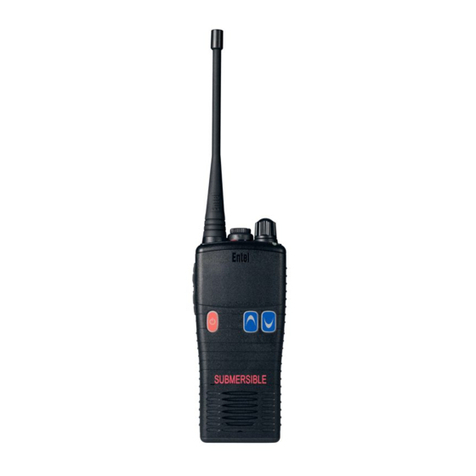
Entel
Entel HT712T User manual
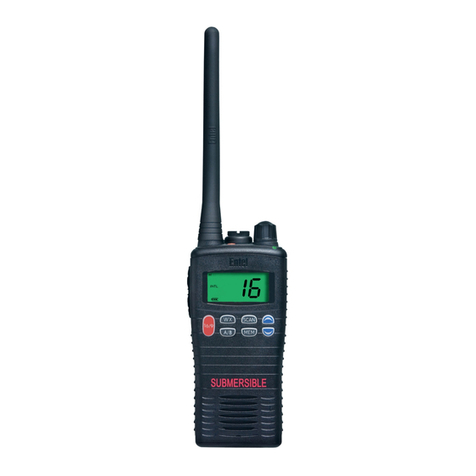
Entel
Entel HT644 GMDSS User manual

Entel
Entel EURO-WAVE User manual
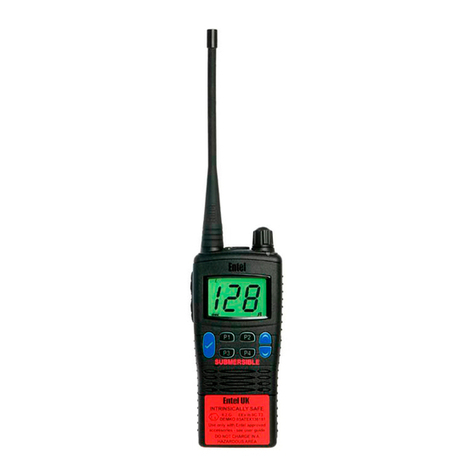
Entel
Entel HT920 User manual
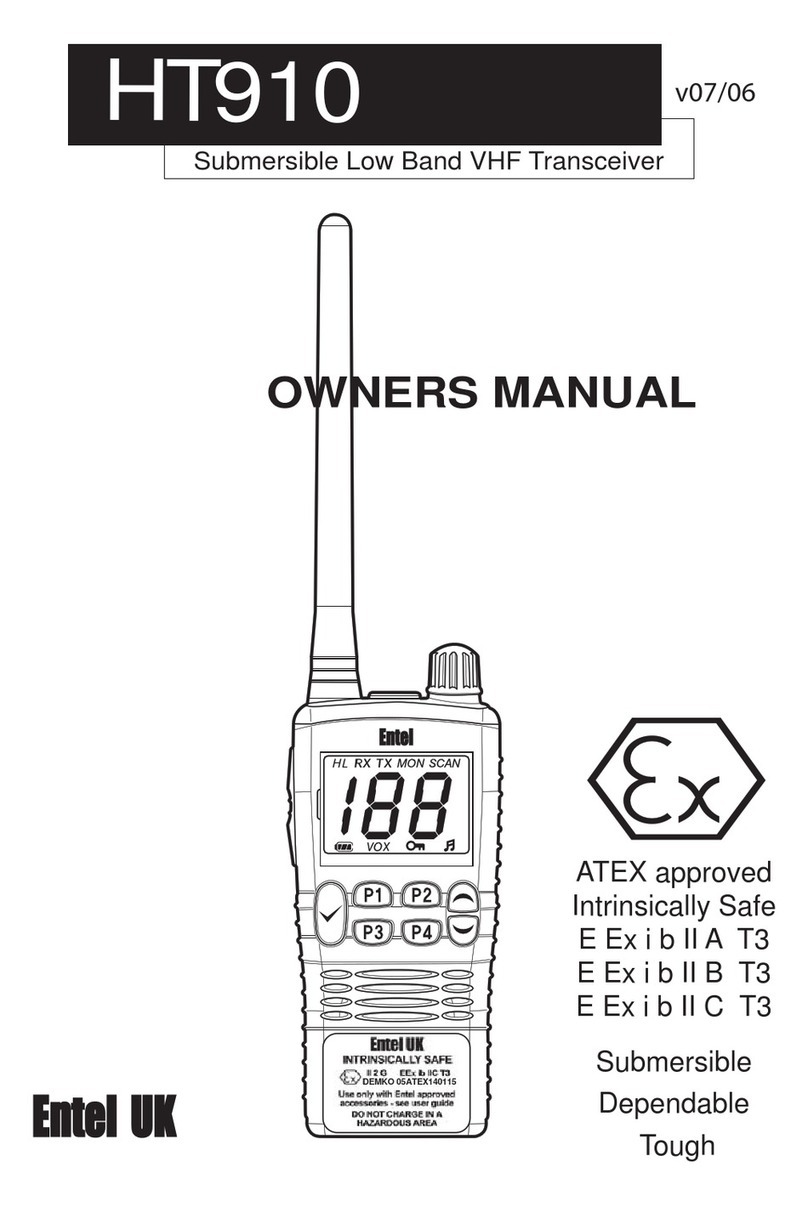
Entel
Entel HT910 User manual
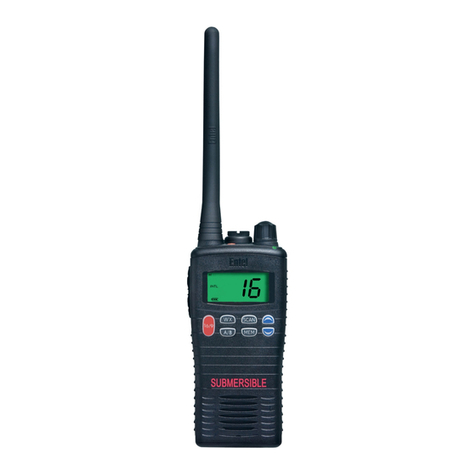
Entel
Entel HT642 User manual

Entel
Entel HT9506 User manual
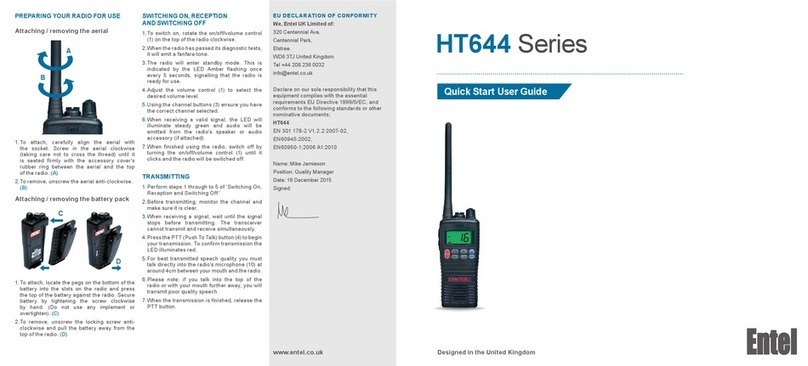
Entel
Entel HT644 Series Setup guide
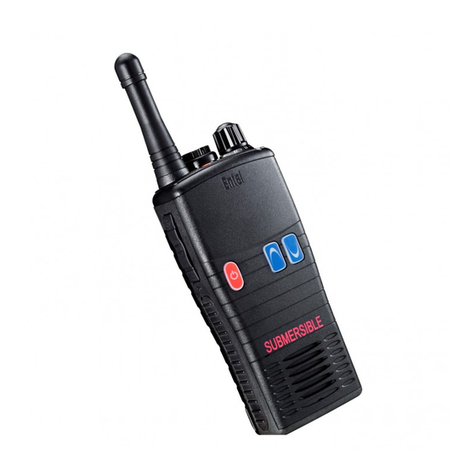
Entel
Entel HT700 2.0 Series User manual

Entel
Entel HT542 User manual
Popular Transceiver manuals by other brands
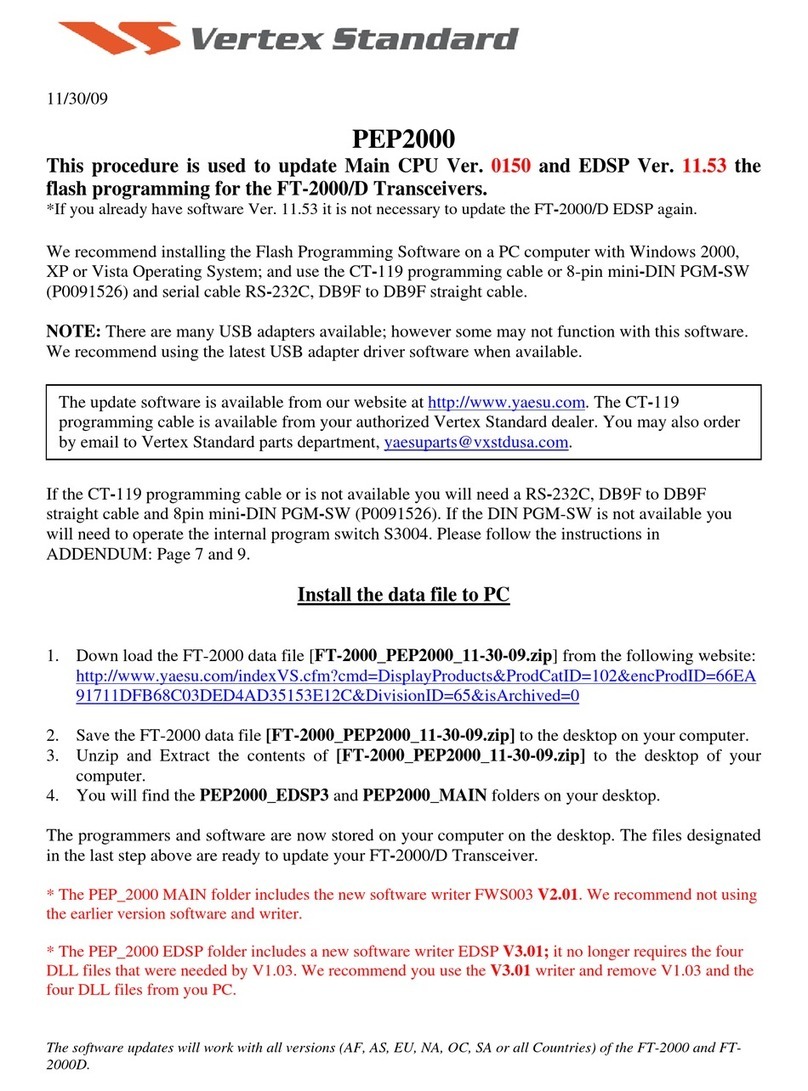
Yaesu
Yaesu FT-2000D - UPDATE V0150 AND V11.53 Update

Yaesu
Yaesu FT-2500M instruction manual
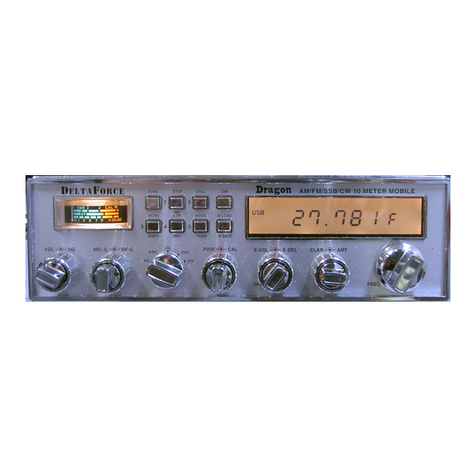
Magnum
Magnum DELTAFORCE operating manual
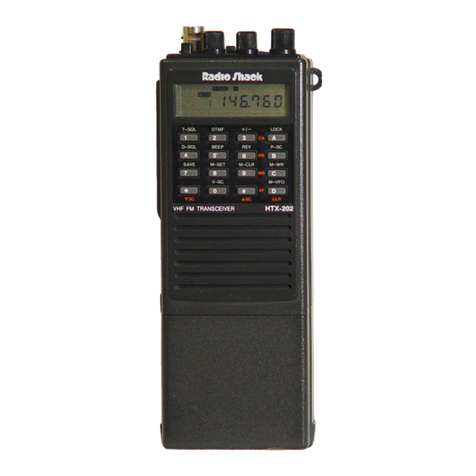
Radio Shack
Radio Shack HTX-202 owner's manual

TIL
TIL TDFM-7000 Installation and operating instructions
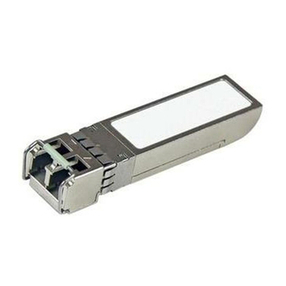
Delta Electronics
Delta Electronics LCP-2488A4EDRxM Specification sheet
